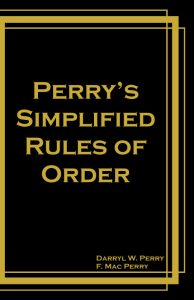| PRO | RONR | |
| Designed to be easy to understand and use, aiming to simplify parliamentary procedure. | More comprehensive and detailed, covering a wide range of situations and procedures. | |
| Only 13 pages of rules that can easily be understood. | Nearly 700 pages of rules that are complicated and can be hard to understand. | |
| Those more familiar with the rules do not have an advantage over those who are not. | Those more familiar with the rules are able to manipulate a meeting. | |
| Less formal, allowing members to participate even if they use incorrect terminology. | More formal, with specific language and procedures that must be followed strictly. | |
| Emphasizes reaching consensus and encourages unanimous consent where possible. | Focuses more on majority rule and has detailed procedures for handling dissent and debate. | |
| Any motion with multiple parts can be divided upon request without a second. | Requires a second and sometimes debate and a vote to divide a motion. | |
| Explicitly states that electronic meetings are subject to the same rules as in-person meetings. | Provides guidelines for electronic meetings but generally assumes in-person meetings unless otherwise specified. | |
| Simplified for adoption as the parliamentary authority and emphasizes not superseding bylaws or standing rules. | More detailed and extensive process for adopting rules and integrating them with existing governing documents. |

